While riding a scooter along the northeast coast in Yilan County a few years ago, I was alarmed to see a building in the distance that appeared to have fallen over, as if toppled by an earthquake.
As I got closer, I realized this was intentional. The architects had made this building appear to be jutting out of the Earth, much like a mountain that was forced upward by tectonic activity. This was the Lanyang Museum (蘭陽博物館), which tells the story of Yilan, both its natural environment and cultural heritage.
The museum is worth a visit, if only just to get a closer look at the exterior of the building, which won the 2010 Taiwan Architecture Award. The museum’s stated mission is to serve as a gateway to understanding Yilan County, which is itself the real museum. And what better way is there to enter this symbolic gateway than through a building that is itself a symbol of Yilan’s physical form?
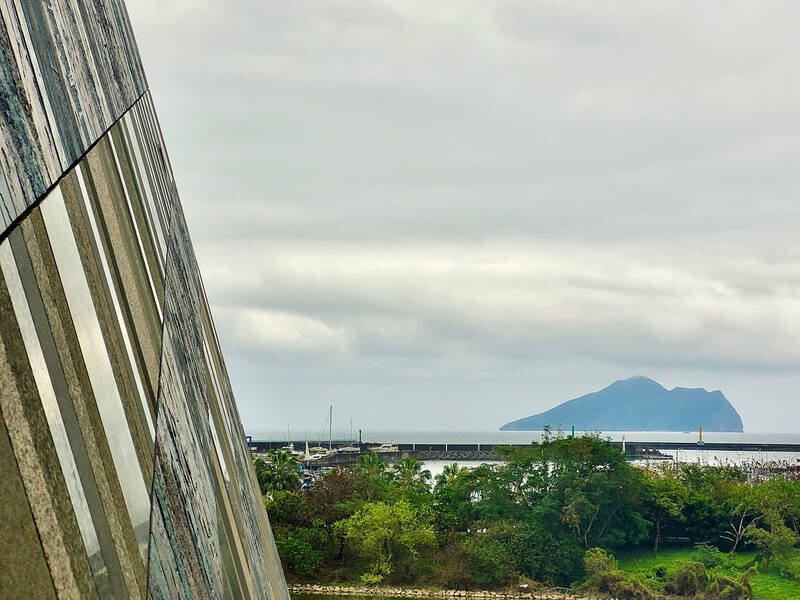
Photo: Tyler Cottenie
The various gray tones on the outside wall towering above the museum’s small lake are a scaled-down version of the mighty cliffs that line Taiwan’s northeast coast. The visual effect is stunning, both from afar and from up close. The angle of the outside walls and sloped roof make it seem almost impossible that the interior could be a practical space, but step inside and you’ll see that the clever design does work.
Once inside, you’ll also go beyond a superficial physical understanding of Yilan and start to explore its cultural heritage. From now until April 8, this starts with a photography exhibit commemorating the centennial of the railroad’s Yilan Line from Badu (八堵) to Suao (蘇澳). These high-quality photos were taken in the 1920s by a Japanese engineer who worked on this line’s construction. The exhibit is in the entrance hall and does not require a ticket.
THE LAND
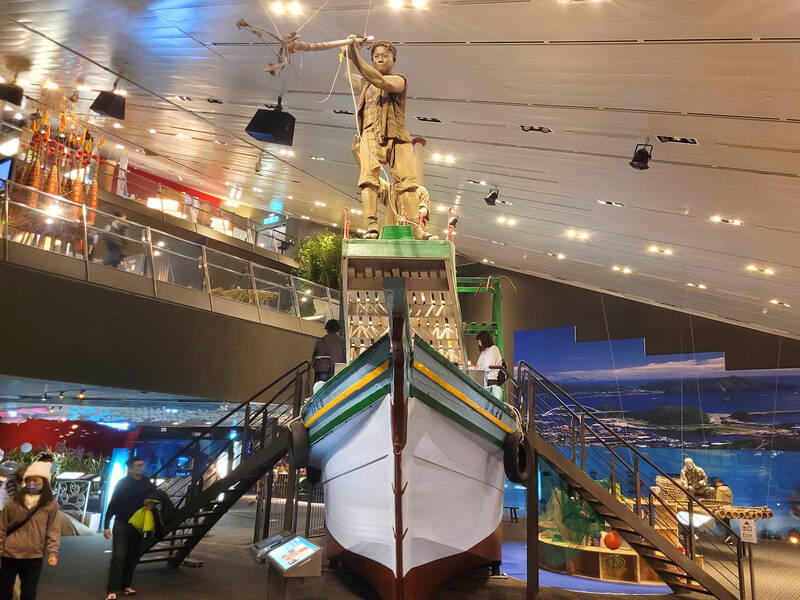
Photo: Tyler Cottenie
The paid visit begins with a small exhibit on the geology, flora and fauna of Yilan, but focuses more heavily on the human (especially Han) use of the land. The butterfly exhibit is, unfortunately, so poorly lit that it is probably ignored by many visitors. On the other hand, the bird call exhibit is much more informative. Do you know what the Mikado pheasant (the bird on the NT$1,000 bill) sounds like? What about the Taiwan yuhina or the Taiwan liocihla? With the clear recordings available to play on-demand, visitors can quickly learn to impress others with their ornithological prowess.
As for flora, the museum teaches about the giant cypress trees that were common in Yilan’s primeval forests, but mostly in the context of their value to logging operations. Real cypress wood is on display here, too, but in the form of an art exhibit. Specific sections of cypress full of whorls, twists and odd protrusions or indentations were identified by the artist for their resemblance to another natural object, and then cut out and given an attractive finish.
Besides logging, land in Yilan was also cleared for farming. One room displays an indigenous Atayal village and shows how they farmed to supplement their diet. Their technique for sustainable agriculture was to plant alder trees to replenish the nutrients in the soil after a certain area became unproductive for their crops. Han farming techniques are given much more attention.

Photo: Tyler Cottenie
One of the larger and more ingenious farming artifacts is a water ladder, used to irrigate Yilan’s rice paddies. Because of its long overall shape with paddles placed at regular intervals, somewhat resembling vertebrae on an enormous spine, it is known locally as a “dragon bone waterwheel” (龍骨水車).
Yilan farmers even managed to recruit ducks to help the rice grow better. All it took was a bit of rice on the ground — which happened anyway, as some of the crop inevitably fell to the ground during harvest — and the ducks they released would happily wander around cleaning it up. Eliminating these grains did not help future crops grow better, of course, but the ducks did leave a fair amount of natural fertilizer behind while waddling around in the paddy.
THE SEA
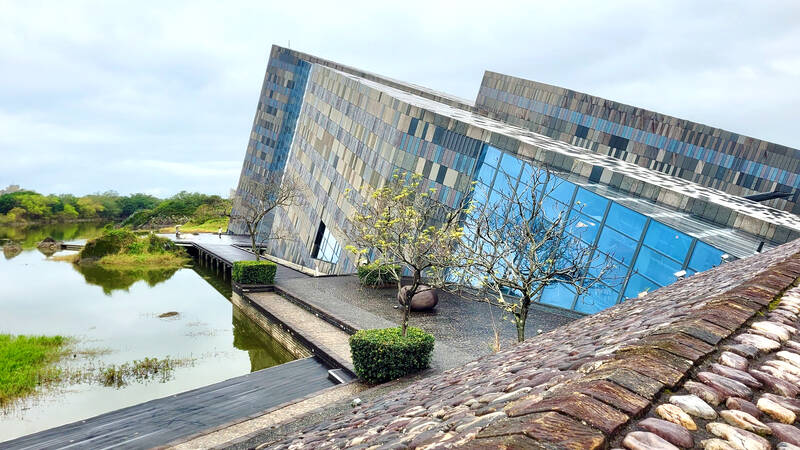
Photo: Tyler Cottenie
While rice growing has always been an important part of Yilan’s economy, residents have also had a close relationship with the sea, and the museum showcases this with the help of its largest single artifact, a full-size harpoon boat made of cypress.
This boat is the main attraction for many visitors as you can board it to get a closer look at its features. Check out the boat’s “freezer,” a compartment that was loaded with nearly two tons of ice before a long fishing trip, to help preserve the catch as well as the crew’s own food. The mannequins on board give a sense of how difficult this type of work was, especially for the harpooner.
Protruding from the bow of this boat is a narrow platform on which the harpooner stands, holding his weapon at the ready and carefully maintaining his balance as the boat is rocked by waves on the open ocean, until it can be maneuvered close enough to a large fish for him to launch the harpoon by hand. This technique is used to catch larger fish like ocean sunfish, sharks and swordfish.
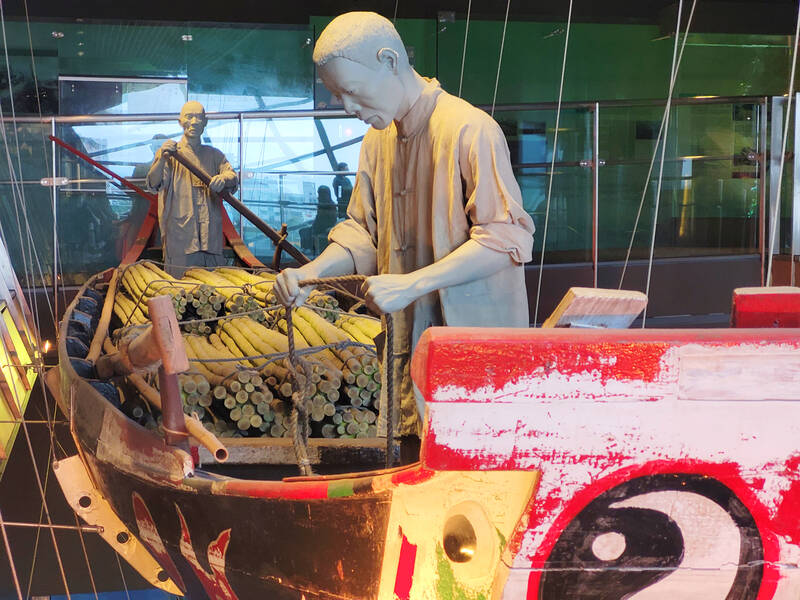
Photo: Tyler Cottenie
Other methods of improving catches in the rich waters of the Pacific Ocean have been used by Yilan residents over the years. In the 1950s, one clever fisherman decided to cut a bamboo fishing raft in half so that he and his fishing partner would have two smaller rafts from which to fish, potentially doubling their chances of making a good catch.
When this proved successful, others started to imitate their method, eventually piling as many as 12 small bamboo rafts onto one large boat. When they arrived at their designated fishing area, the one-man rafts would be launched and spread out, dramatically widening the area they could cover. One of these piggybacking rafts, known in Hoklo (more commonly known as Taiwanese) as tiotsoa (釣槽仔), has been set up in the museum to look as if it is in the middle of a day of fishing, suspended a meter above the floor and loaded with the necessary equipment.
Many visitors will not be familiar with the wide variety of fish that are caught in Yilan’s waters, so the museum has a mock fish market set up with stuffed fish, each labeled with the Chinese and scientific names and colored realistically. A video also introduces a more unusual inhabitant of Yilan’s waters, around the volcanically active Turtle Island (龜山島). This crab, Xenograpsus testudinatus, was first described by Taiwanese scientists in 2000, and thrives in the hot, acidic waters next to hydrothermal vents.
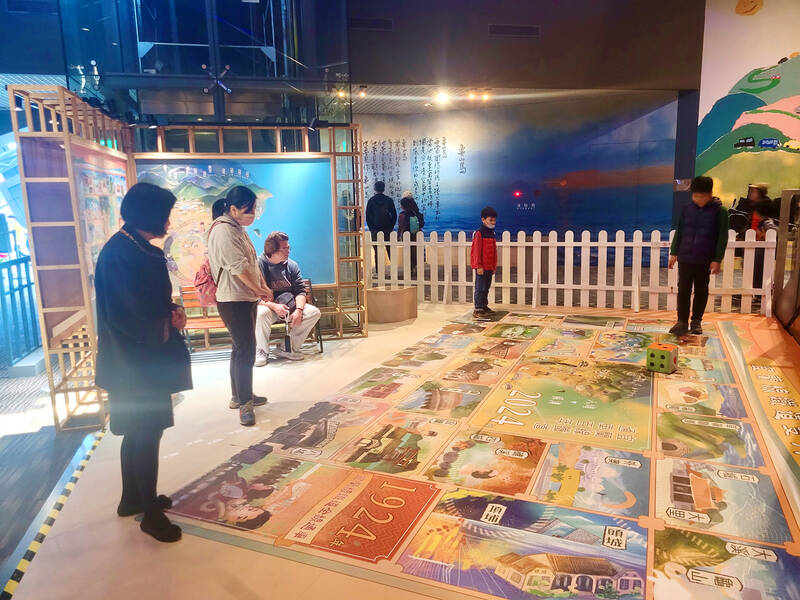
Photo: Tyler Cottenie

The People’s Republic of China (PRC) last week offered us a glimpse of the violence it plans against Taiwan, with two days of blockade drills conducted around the nation and live-fire exercises not far away in the East China Sea. The PRC said it had practiced hitting “simulated targets of key ports and energy facilities.” Taiwan confirmed on Thursday that PRC Coast Guard ships were directed by the its Eastern Theater Command, meaning that they are assumed to be military assets in a confrontation. Because of this, the number of assets available to the PRC navy is far, far bigger

The 1990s were a turbulent time for the Chinese Nationalist Party’s (KMT) patronage factions. For a look at how they formed, check out the March 2 “Deep Dives.” In the boom years of the 1980s and 1990s the factions amassed fortunes from corruption, access to the levers of local government and prime access to property. They also moved into industries like construction and the gravel business, devastating river ecosystems while the governments they controlled looked the other way. By this period, the factions had largely carved out geographical feifdoms in the local jurisdictions the national KMT restrained them to. For example,

The remains of this Japanese-era trail designed to protect the camphor industry make for a scenic day-hike, a fascinating overnight hike or a challenging multi-day adventure Maolin District (茂林) in Kaohsiung is well known for beautiful roadside scenery, waterfalls, the annual butterfly migration and indigenous culture. A lesser known but worthwhile destination here lies along the very top of the valley: the Liugui Security Path (六龜警備道). This relic of the Japanese era once isolated the Maolin valley from the outside world but now serves to draw tourists in. The path originally ran for about 50km, but not all of this trail is still easily walkable. The nicest section for a simple day hike is the heavily trafficked southern section above Maolin and Wanshan (萬山) villages. Remains of
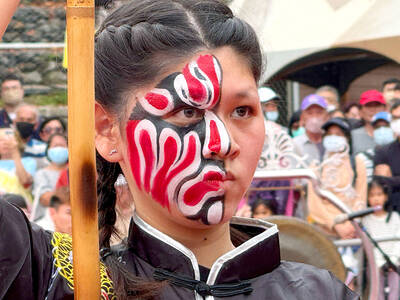
Shunxian Temple (順賢宮) is luxurious. Massive, exquisitely ornamented, in pristine condition and yet varnished by the passing of time. General manager Huang Wen-jeng (黃文正) points to a ceiling in a little anteroom: a splendid painting of a tiger stares at us from above. Wherever you walk, his eyes seem riveted on you. “When you pray or when you tribute money, he is still there, looking at you,” he says. But the tiger isn’t threatening — indeed, it’s there to protect locals. Not that they may need it because Neimen District (內門) in Kaohsiung has a martial tradition dating back centuries. On